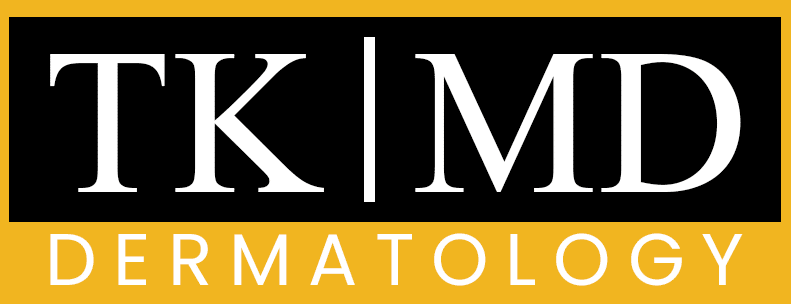Shingles, medically known as herpes zoster, is a viral infection that manifests as a painful rash. It is caused by the reactivation of the varicella-zoster virus, the same virus responsible for chickenpox. After we have had chickenpox, the virus remains dormant in our nerve tissues.
For reasons that are not entirely understood, it can reactivate later in life, leading to shingles. This condition is characterized by a localized rash that typically appears on one side of the body or face, often accompanied by significant discomfort. The rash associated with shingles usually develops into blisters that eventually crust over.
While it is not life-threatening, shingles can be quite debilitating due to the pain and discomfort it causes. The experience of shingles can vary widely among individuals; some may have mild symptoms, while others may endure severe pain and complications.
Understanding shingles is crucial for recognizing its symptoms and seeking timely treatment.
Key Takeaways
- Shingles is a viral infection that causes a painful rash and is caused by the varicella-zoster virus, the same virus that causes chickenpox.
- Symptoms of shingles include a painful rash, itching, burning, and fluid-filled blisters, usually appearing on one side of the body.
- The main cause of shingles is the reactivation of the varicella-zoster virus, which can occur due to a weakened immune system or stress.
- Risk factors for shingles include age (50 and older), having had chickenpox, and a weakened immune system.
- Complications of shingles can include postherpetic neuralgia, vision loss, and neurological problems.
Symptoms of Shingles
The Rash and Its Characteristics
Once the rash develops, it typically starts as red patches that evolve into fluid-filled blisters. These blisters can be extremely painful and may break open, leading to crusting over as they heal. The rash usually follows a dermatomal pattern, meaning it appears along a specific nerve pathway on one side of the body.
Associated Symptoms
In addition to the rash and pain, we may also experience other symptoms such as fever, fatigue, and sensitivity to light.
The Impact of Shingles Pain
The pain associated with shingles can be intense and is often described as sharp or burning. For some, this pain can persist even after the rash has healed, a condition known as postherpetic neuralgia.
This lingering pain can significantly impact our quality of life, making it essential to recognize the symptoms early and seek appropriate medical care.
Causes of Shingles

The primary cause of shingles is the reactivation of the varicella-zoster virus, which lies dormant in our bodies after we have recovered from chickenpox. Various factors can trigger this reactivation, including stress, illness, or a weakened immune system. As we age, our immune response naturally declines, making us more susceptible to conditions like shingles.
This is why shingles is more common in older adults, particularly those over the age of 50. Moreover, certain medical conditions or treatments that compromise our immune system can also increase the likelihood of developing shingles. For instance, individuals undergoing chemotherapy or those with autoimmune diseases may find themselves at a higher risk.
Understanding these causes helps us appreciate the importance of maintaining a healthy immune system and managing stress effectively to reduce our risk of shingles.
Risk Factors for Shingles
Several risk factors contribute to our likelihood of developing shingles. Age is one of the most significant factors; as we grow older, our chances of experiencing shingles increase dramatically. Studies indicate that nearly one in three people will develop shingles in their lifetime, with the risk rising sharply after age 50.
Additionally, individuals with weakened immune systems due to conditions such as HIV/AIDS or those on immunosuppressive medications are at a heightened risk. Other factors include a history of chickenpox and certain lifestyle choices. For example, those who have had severe cases of chickenpox may be more prone to shingles later in life.
Stress and emotional trauma can also play a role in triggering the virus’s reactivation. By being aware of these risk factors, we can take proactive steps to protect ourselves and seek medical advice if we believe we are at risk.
Complications of Shingles
While many people recover from shingles without any long-term issues, complications can arise that significantly affect our well-being. One of the most common complications is postherpetic neuralgia (PHN), which is characterized by persistent pain in the area where the shingles rash occurred. This pain can last for months or even years after the rash has healed and can be debilitating for those affected.
Other potential complications include bacterial infections of the skin due to scratching or breaking open blisters, vision problems if the rash occurs near the eyes, and neurological issues if the virus affects certain nerves. In rare cases, shingles can lead to more severe complications such as pneumonia or encephalitis. Understanding these potential complications emphasizes the importance of early diagnosis and treatment to mitigate risks.
Diagnosis of Shingles

Diagnosing shingles typically involves a thorough examination by a healthcare professional who will assess our medical history and symptoms. The characteristic appearance of the rash often makes diagnosis straightforward; however, in some cases where the presentation is atypical or if we have not yet developed a rash, additional tests may be necessary. These tests can include blood tests to detect the presence of varicella-zoster virus antibodies.
In certain situations where complications are suspected, imaging studies or further neurological evaluations may be warranted. Early diagnosis is crucial because prompt treatment can help alleviate symptoms and reduce the risk of complications. If we suspect we have shingles based on our symptoms or rash appearance, seeking medical attention quickly is essential.
Treatment Options for Shingles
When it comes to treating shingles, antiviral medications are often prescribed to help reduce the severity and duration of symptoms. These medications are most effective when taken within 72 hours of the onset of the rash. Alongside antiviral therapy, pain management is a critical component of treatment.
Over-the-counter pain relievers such as ibuprofen or acetaminophen may provide relief for mild pain, while stronger prescription medications may be necessary for more severe discomfort. In addition to medication, we may also benefit from topical treatments that can soothe itching and irritation associated with the rash. Cool compresses and calamine lotion are popular home remedies that many find helpful in alleviating symptoms.
For those experiencing postherpetic neuralgia, additional treatments such as nerve blocks or certain antidepressants may be recommended to manage chronic pain effectively.
Prevention of Shingles
Preventing shingles primarily revolves around vaccination and maintaining a healthy lifestyle. The shingles vaccine is recommended for adults over 50 years old and has been shown to significantly reduce the risk of developing shingles and its complications. There are two vaccines available: Zostavax and Shingrix, with Shingrix being preferred due to its higher efficacy and longer-lasting protection.
In addition to vaccination, adopting healthy habits can also play a role in prevention. Managing stress through relaxation techniques such as yoga or meditation can help bolster our immune system. Regular exercise, a balanced diet rich in vitamins and minerals, and adequate sleep are all essential components of maintaining overall health and reducing our risk of viral infections like shingles.
Shingles and Pregnancy
For pregnant individuals, shingles presents unique considerations due to potential risks to both mother and baby. While having had chickenpox provides some immunity against shingles during pregnancy, there is still a possibility for reactivation of the virus. If we develop shingles while pregnant, it is crucial to seek medical advice promptly to manage symptoms effectively while minimizing risks.
The primary concern during pregnancy is whether the virus could affect the unborn child, particularly if we contract chickenpox during pregnancy rather than shingles itself. However, if we have had chickenpox previously and develop shingles later on, the risk to the baby is generally low. Nonetheless, discussing any concerns with our healthcare provider ensures that we receive appropriate care tailored to our situation.
Shingles and Shingles Vaccine
The shingles vaccine plays a vital role in preventing this painful condition. As mentioned earlier, there are two vaccines available: Zostavax and Shingrix. Zostavax has been available for several years but has been largely replaced by Shingrix due to its superior effectiveness in preventing shingles and postherpetic neuralgia.
Shingrix is administered in two doses, with the second dose given two to six months after the first. Studies have shown that Shingrix reduces the risk of developing shingles by over 90% in adults aged 50 and older. It is important for us to discuss vaccination options with our healthcare provider to determine which vaccine is best suited for our individual health needs.
Living with Shingles: Tips and Advice
Living with shingles can be challenging due to its physical discomfort and emotional toll. We should prioritize self-care during this time by ensuring we get plenty of rest and stay hydrated. Applying cool compresses to affected areas can help soothe itching and reduce inflammation.
Additionally, maintaining open communication with friends and family about our condition can provide emotional support during recovery. Joining support groups or online communities where we can share experiences with others who have had shingles may also be beneficial. Lastly, following our healthcare provider’s recommendations regarding treatment and lifestyle adjustments will aid in our recovery process and help us manage any lingering effects effectively.
In conclusion, understanding shingles—its symptoms, causes, risk factors, complications, diagnosis, treatment options, prevention strategies, implications during pregnancy, vaccination importance, and tips for living with it—empowers us to take proactive steps in managing this condition effectively. By staying informed and seeking timely medical advice when needed, we can navigate this challenging experience with greater confidence and resilience.
If you are interested in learning more about skin conditions and treatments, you may want to check out this article on skin cancer detection. It provides valuable information on how to detect and prevent skin cancer, which is crucial for maintaining overall skin health. Additionally, if you are looking for facial treatments specifically for men, you can read this comprehensive guide on the best facial treatment for men. And if you are located in Kissimmee, FL, you can visit Dr. Trisha Khanna’s store for expert skincare advice and products.
FAQs
What is shingles?
Shingles is a viral infection that causes a painful rash. It is caused by the varicella-zoster virus, which is the same virus that causes chickenpox.
What are the symptoms of shingles?
The symptoms of shingles include a painful, blistering rash that typically appears on one side of the body, along with fever, headache, and sensitivity to light.
Who is at risk for shingles?
Anyone who has had chickenpox is at risk for developing shingles, as the varicella-zoster virus remains dormant in the body and can reactivate later in life.
How is shingles treated?
Shingles is typically treated with antiviral medications to reduce the severity and duration of the illness. Pain medications and topical treatments may also be used to manage symptoms.
Can shingles be prevented?
The shingles vaccine is recommended for adults over the age of 50 to reduce the risk of developing shingles and its complications.
Is shingles contagious?
Shingles itself is not contagious, but the varicella-zoster virus can be spread to others who have not had chickenpox or been vaccinated against it, leading to the development of chickenpox, not shingles.


